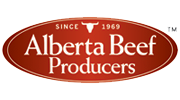Effects of the Galanin Gene on ADG & Fat Deposition
| Project Code: | 0009-017 |
| Completed: | November 2011 |
Project Title:
Effects of a Genetic Variant in the Galanin Gene on Gain and Fat Deposition in Cattle
Researchers:
Sheila Schmutz sheila.schmutz@usask.ca
Sheila Schmutz, PhD (University of Saskatchewan)
Galanin is a gene that is down-regulated (suppressed) by the gene leptin, which has been previously shown to affect fat deposition in cattle. In addition, galanin has been shown to inhibit leptin expression and secretion in the fat cells of mice. Leptin and galanin are both genes in the fat metabolism pathway. Leptin is secreted by fat cells and circulates to the appetite centre of the brain, either stimulating appetite or suppressing it. Some feedlot owners have successfully used leptin genotype to manage cattle in the feedlot with the goal of reducing days on feed, thus reducing costs. Since leptin and galanin are both actively involved in the metabolism of fat and regulation of appetite, and given the effect of leptin genotype on fat deposition and days on feed, it makes sense to study other genes in the same pathway to determine their effects as well. A mutation in galanin was previously identified in Dr. Schmutz’s lab, which meant that there was an ability to study the effect of the galanin mutation in cattle.
Genetics Primer: DNA (deoxyribonucleic acid) contains the genetic instructions used in the development and function of all living organisms. DNA is a long chain of repeating units called nucleotide bases. There are four main types of nucleotide bases that make up the structure of DNA. They are adenine (A), guanine (G), cytosine (C) and thymine (T). The order of these bases will determine which amino acids, and consequently proteins are formed. The DNA segments that carry this information are called genes. Most genes have at two different forms, called alleles. Sometimes, one form (allele) will result in different observable traits than the other allele. If both alleles are the same, an animal (or human!) is referred to as homozygous for that trait. If both alleles are different, they are referred to as heterozygous.
${pageBreak}
Objectives:To determine the effect of a mutation in the galanin gene on average daily gain and fat deposition in cattle during backgrounding and finishing, as well as any effects on carcass fat traits.
What They Did:A protocol was developed for genotyping the galanin gene, and 351 steers from a behavioural study at the U of S and 734 steers from a commercial feedlot in Texas were successfully genotyped. Both production and carcass data were monitored in the U of S population, while the Texas steers only had carcass data available.
What They Learned:This particular mutation involves three possible genotypes; A/A (adenine/adenine), A/G (adenine/guanine), or G/G (guanine/guanine). In both populations, the allele frequency (the relative proportion of a gene variant in a population) for the A allele was low, 9% in the U of S population and 7% in the feedlot population. In addition, only 7 steers in both populations were homozygous for the A allele.
Average daily gain tended to be higher by 0.11 lbs/day in the steers carrying the A allele in the U of S population (data was not available for the Texas population) during the backgrounding period than in those steers homozygous for the G allele, but was not statistically significant. However, this slight difference did not continue into the finishing period. In terms of carcass fat, cattle with the G/G genotype tended to be leaner than cattle with the A/G genotype in the Texas population, but no differences were found in the U of S population.
What It Means:Although the frequency of the A allele was quite low in both populations studied, these rare mutations often have the greatest potential for genetic selection, as they are not already present in the population at high levels.
The finding that the small improvement in ADG in the A/A and A/G steers did not remain consistent between the backgrounding and finishing phases could mean that galanin is not expressed at the same levels throughout the growth cycle of an animal, or there could be some other confounding factors not accounted for by this study. While steers showing the A allele did tend to be fatter in the Texas population, it is worth noting that these steers were finished to what would be considered a very high backfat level, compared to what is common in Canada. While it is possible that selection for the A allele in the galanin gene could be of some benefit to feedlot producers who finish to a very high level of fat, a DNA test for this mutation would not be very beneficial to Canadian producers.
This study of galanin was one of many examining various genes in the fat metabolism pathway. It was a logical progression given its relationship to leptin. Although the results of this study did not show a clear benefit to Canadian producers, we now know more about the fat metabolism pathway and how the galanin gene operates. Often, research does not supply us with the results we want, but every project provides us with more knowledge than was previously available, and that is a benefit not so easily measured.








